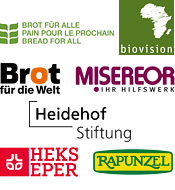News
15.11.2016
More efforts needed to increase carbon sequestration in agricultural soils, study
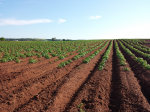
Radical land use change coupled with enhanced carbon sequestration in productive agricultural lands has the potential to mitigate climate change, according to a new paper published in the journal Scientific Reports. However, if urban sprawl and the conversion from grassland and forest into cropland continue, agricultural soils could turn from a carbon sink to a significant source of carbon dioxide. Researchers from the University of Exeter, INRA and CERFACS in France and University of Leuven in Belgium warn that business-as-usual land use change is likely to lead to significant soil organic carbon loss due to the impact of climate change. This could endanger the functioning of soil’s vital ecosystem services such as food security, aquifer quality, soil erosion protection and flood regulation, the scientists say. “A reduction in anthropogenic CO2 levels is crucial to prevent further loss of carbon from our soils,” said lead author Dr Jeroen Meersmans from the University of Exeter. The researchers combined soil carbon models, land use and management data and different climate change scenarios, using France as a case study. They predict that land under almost all uses will be subject to dramatic losses of soil carbon by the end of the century. The study found that up to 25 percent of soil carbon in France could be lost to the atmosphere by 2100. According to Meersmans, an integrated strategy to protect soil functions and mitigate climate change would require the “promotion of land use changes and management that contribute to soil carbon sequestration”. One way to maintain soil’s important role as a carbon sink would be to convert cropland to grassland or forest. But the scientists say this is unrealistic because of the pressures on land resources imposed by urban expansion and food production. Therefore, the solution to enhanced carbon sequestration lies in productive agricultural lands. According to the study, by promoting or enforcing environment specific land and/or agro-management techniques, such as green manuring, reduced tillage, erosion prevention, smart irrigation, agroforestry and crop rotations at farm or landscape level, policy makers can attempt to counter that soils will act as very large sources of CO2 by the end of the century. “Purposive, targeted land use and agricultural practice changes would be needed if climate change mitigation is to be maximized,” says co-author Dr Dominique Arrouays of the French National Institute for Agricultural Research. “Therefore, the efforts to enhance carbon sequestration in soils, as proposed by France during the COP21, should be promoted immediately,” urges Arrouays. (ab)
10.11.2016
Climate tax on meat and dairy would cut emissions and save lives, study
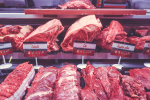
A climate tax on meat and dairy products could lead to lower emissions and save half a million lives a year, new research published in the journal Nature Climate Change has found. According to scientists at Oxford University, beef would have to be 40% more expensive globally to account for the greenhouse gas emissions caused by its production. The price of milk and other meats would need to increase by up to 20%, and the price of vegetable oils would also need to rise. The researchers have calculated that such price increases would lead to a 10% decrease in the consumption of food items that are high in emissions. This could save about one billion tonnes of greenhouse gas emissions by the year 2020, more emissions than are currently caused by global aviation. “Emissions pricing of foods would generate a much needed contribution of the food system to reducing the impacts of global climate change,” said lead author Dr Marco Springmann from the Oxford Martin Programme on the Future of Food at the University of Oxford. “If you’d have to pay 40% more for your steak, you might choose to have it once a week instead of twice.” In this first global analysis of the issue, the researchers looked at different pricing models, including one in which all food items were priced in line with the emissions their production caused, and one in which the tax revenues were used to compensate consumers for higher food prices and to subsidise fruit and vegetable consumption. “Food prices are a sensitive topic,” said Dr Springmann. “We approached the design of climate policies for the food and agriculture system from a health perspective to find out whether the emissions of food production could be priced without putting peoples’ health at risk.” The scientists found that emissions pricing of foods, if properly designed, would be beneficial to human health in high-income, middle-income and most low-income countries and lead to half a million fewer deaths from chronic diseases, such as type 2 diabetes, coronary heart disease, strokes and cancer. However, careful attention must be paid in low-income countries to make sure that climate taxes do not have a negative impact on poor people. In some countries, mainly in Sub-Saharan Africa and South-East Asia, higher food prices could reduce food availability and increase underweight-related deaths. Therefore, emissions pricing would need to be combined with income compensation and subsidies for fruit and vegetables. If properly designed, these policies would result in net positive health impacts in all 150 countries covered by the study due to a lower consumption of red meat, healthier diets and a reduction in the number of people who are overweight or obese. “So far, food production and consumption have been excluded from climate policies, in part due to concerns about the potential impact on food security,” said Dr Springmann. “Here we show that pricing foods according to their climate impacts could not only lead to lower emissions, but also to healthier diets in almost all countries around the world.” (ab)
07.11.2016
Pat Mooney: Peasant systems are more innovative than industrial agriculture
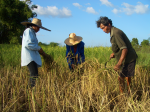
Small-scale farmers are more successful in feeding the world than industrial food systems. The reason is that peasant systems are more innovative, diverse and flexible, says Pat Mooney, recipient of the Right Livelihood Award and Executive Director of ETC Group, a civil society organization headquartered in Canada. On October 25, Mooney took part in an event in Berlin to mark the launch of the “Right to Food and Nutrition Watch 2016”, an annual report published by FIAN, ICCO and Brot für die Welt. This year’s Watch warns that peasant seeds systems and agricultural biodiversity are under threat as a result of increasing corporate pressure. In an interview after the event, Mooney talked about the future of food and farming and the new wave of giant mergers, such as Bayer’s takeover of Monsanto, which according to Mooney are not just about seeds and pesticides but also about who will control Big Data in agriculture. “They already made some arrangements there and realize that they can make the next step of mergers,” he said. “They will use the same arguments they use now, they will say ‘World hunger requires we do this, climate change requires we do this, we must be able to scale up to respond to this crisis, let us take advantage of the technologies, the big data technologies, to put it all together.” However, it is not agribusiness but small-scale farmers who are key to feeding the world and who are better prepared to meet the challenges of climate change, argues Mooney. He thinks that peasant systems are more efficient. “One of the reasons why peasants are so successful at producing and providing food for the world, especially for hungry people, is because the industrial system is so bad at doing it. For every Euro that is spent by consumers in industrialized countries on the industrial food chain, they spend two more Euros in covering the damages, the health and environmental damages of that same industrial food chain.” In addition, the system is inefficient since a large share of food does not make it from farm to table. Apart from that, Mooney considers the peasant system as the better option “because it is the most flexible, it has the most diversity in it and it is the most able to adapt to changes quickly”. Mooney criticised that the industrial system puts a large amount of research and development resources into just one crop: corn. “That is a terribly non-innovative system – we can’t just live on corn in the future. Peasants are working with 6,883 crops. They have much more diversity to work with.” According to Mooney, the history of farmer’s capacity to adjust to climate change is incredible. “For example peasants in Africa, in the course of a century, adapted corn as a new crop to 17 different microclimates around Africa – in only one century! The ability to adapt rapidly to new conditions, and even involve new species, is very high in the peasant system,” says Mooney. (ab)
02.11.2016
Organic crop area in the EU increases by 21% since 2010

The area devoted to organic farming in the European Union has increased by more than one fifth, from 9.2 million hectares in 2010 to 11.1 million hectares in 2015. According to data released by the EU’s statistical office, Eurostat, 6.2% of the total utilised agricultural area is now certified as organic or currently under conversion. Also the number of registered organic producers is on the rise, reaching 271,500 organic farmers by the end of 2015, up 5.4% compared with 2014. With 1.9 million hectares, Spain is the country with the largest area dedicated to organic argiculture, followed by Italy (1,492,579 ha), France (1,361,512 ha) and Germany (1,060,291 ha). These four countries together are accounting for half ot the EU’s organic crop area. Between 2010 and 2015, the area devoted to organic farming has grown in all Member States except the United Kingdom and the Netherlands where the area decreased by 29% and 4% respectively. Considerable progress was made in Croatia and Bulgaria. Both countries recorded almost a fourfold increase of the area devoted to organic farming.
Austria is the leading country when it comes to the highest share of organic crop area, with one fifth (or 552 thousand hectares) of its total agricultural area farmed organically in 2015. In Sweden, 17% of the total farmed area is under organic agriculture, in Estonia the figure is 16%. At the bottom of the table ranks Malta with only 0.3% of the area farmed organically, followed by Ireland (1.6%) and Romania (1.8%). Increasing the size of the area devoted to organic agriculture could offer great benefits. According to the Eurostat press release, “organic farming combines best environmental practices, a high level of biodiversity, the preservation of natural resources and high production standards based on natural substances and processes.” In addition, “it provides for a specific market responding to a specific consumer demand while at the same time delivering public goods in terms of environmental protection, animal welfare and rural development.” (ab)
01.11.2016
World food systems key to tackling global biodiversity loss, report
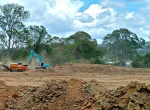
Global biodiversity is continuing to decline at an alarming rate, warns a new report released on October 24 by the World Wildlife Fund (WWF) and the Zoological Society of London. The Living Planet Report 2016, which monitors trends in wildlife abundance of over 14,000 vertebrate populations, shows that animal populations plummeted by 58% between 1970 and 2012. “Wildlife is disappearing within our lifetimes at an unprecedented rate,” said Marco Lambertini, Director General of WWF International. “This is not just about the wonderful species we all love; biodiversity forms the foundation of healthy forests, rivers and oceans. Take away species, and these ecosystems will collapse along with the clean air, water, food and climate services that they provide us.”
The report predicts that by 2020, the world could have lost 67% of all vertebrate wildlife compared to 1970 unless decisive action is taken now. Human activities, such as the conversion of natural habitat to agriculture, overexploitation of fisheries, pollution of freshwater by industries, urbanization and unsustainable farming and fishing practices, are diminishing natural capital at a faster rate than it can be replenished. According to the authors, the consequences of this natural capital depletion are already being felt and are expected to grow over time. The results will be increasing food and water insecurity, raising prices for many commodities, and increasing competition for land and water. The authors stress that food production is one of the main causes of biodiversity loss through habitat degradation, overexploitation of species, pollution and soil loss. Agriculture is also a primary force behind the transgression of the Planetary Boundaries for nitrogen, phosphorus, climate change, biosphere integrity, land-system change and freshwater use. As the report points out, “transitioning toward an adaptive and resilient food system that provides nutritious food for all within the boundaries of a single planet is a daunting but essential goal.” However, the status quo is reinforced by current structures within the industrialized global food system, including agricultural subsidies, governmental research programmes, and metrics that do not consider the environmental, social, ethical and cultural impacts in the costs of production. But according to the authors, these same structures also represent leverage points for change to make food and farming systems more sustainble.
The report says “optimizing productivity by diversifying farms and farming landscapes, increasing biodiversity and stimulating interactions between different species can be part of holistic strategies to build healthy agro-ecosystems, secure livelihoods, protect natural systems and preserve biodiversity.” According to the authors, diversified farming is applicable to all types of agriculture, including highly specialized industrial agriculture and subsistence farming. Lambertini is confident that it is still not too late to stop the global biodiversity loss. “We have the tools to fix this problem and we need to start using them now if we are serious about preserving a living planet for our own survival and prosperity,” said Lambertini. “We are at a decisive moment in time when we can seize the solutions to steer our food, energy and finance systems in a more sustainable direction.” (ab)
28.10.2016
Keeping seeds in the hands of peasant farmers instead of corporations

Peasant seeds systems and agricultural biodiversity are under threat as a result of increasing corporate pressure, according to the Right to Food and Nutrition Watch 2016 published by Bread for the World, FIAN International and ICCO Cooperation on October 13 in Rome. The report, which is supported by 24 civil society organizations, draws attention to the threats around access to seeds for smallholder farmers worldwide. “A staggering 70% of the food we consume worldwide is produced by smallholders. Peasant and indigenous communities, who produce a great deal of this food, have been developing and saving seed for millennia - from Guatemala through Senegal to Nepal,” the editors write in the foreword to the report. “However, today seeds are under threat everywhere. Laws are increasingly limiting what peasants can do with their seeds and criminalizing them, thereby impeding their role as food producers and threatening our food sovereignty.”
The authors warn that peasants’ rights to save, use, exchange and sell seeds are under growing corporate pressure and have been neglected by states. Seed and agrochemical transnational corporations seek to privatize, monopolize and control seeds, patenting and commodifying the very source of life. The report says the new wave of giant mergers – Bayer with Monsanto, Dow Chemicals with DuPont and Syngenta with ChemChina, to name but a few – shows that corporations are aiming for a tighter grip on genetic resources, leading to even more market concentration. The economic, ecological, and socio-political risks of a monopolized seed system are innumerable, warns the report. The corporate food regime is leading to the disintegration of small-scale farming and small-scale fisheries as sustainable livelihoods, and to the destruction of collective ways of managing seeds, land and natural resources as commons. According to Marijke de Graaf, expert food and nutrition security at ICCO Cooperation, “Without access to seeds, smallholder famers will not be able to meet the growing demand to enough and qualitative food.”
The report also shows how peasant movements, indigenous peoples, and other local communities around the world are resisting the privatization and commoditization of nature and presenting alternatives. In addition, it turns the spotlight on the fact that access to and control over seeds and natural resources are also directly related to the rising levels of criminalization and killings of human rights defenders. “The criminalization of those who defend the commons, currently on the rise, needs to stop,” said Sofia Monsalve, FIAN International’s Secretary General. Thus, one recommendation of the report is that states must step up and fulfill their human rights obligations by adopting stronger policies and laws to protect peasants’ rights to save, use, exchange and sell seed. “Peasant seed systems, which underpin agricultural biodiversity, should be recognized, protected, and promoted by states,” Monsalve added. What also needs to be changed is the current value system that prioritizes seed and food for profit over seed and food rights for those who produce it and their heirs. (ab)
24.10.2016
Trade agreements block agroecology and food sovereignty, report finds

The current trade and investment framework blocks the development of agroecology and food sovereignty by promoting and cementing the agribusiness model, says a new report released by Friends of the Earth International. The report finds that also the agreements currently under negotiation, such as the Transatlantic Trade and Investment Partnership (TTIP) and the Trans-Pacific Partnership (TPP), as well as some major aid programmes, undermine the sovereignty of states and hinder their ability to develop their own agricultural economies and food sovereignty. According to the authors, the main reason is profit: The objective of trade and investment agreements is to attract agribusiness investments and to generate profits by opening up new markets for agribusiness. This means that trade and investment deals include clauses to protect agribusiness’ profits, even when this comes at the cost of states and peoples welfare. “Agribusinesses are using the smokescreen of investment to rip apart domestic food security strategies as well as social and environmental regulations. In their obscene pursuit of profit, agribusinesses could even claim millions in compensation when States try to stop land grabbing or keep seeds free for farmers,” said Kirtana Chandrasekaran, Programme Coordinator for Food Sovereignty at Friends of the Earth International. In an article for The Ecologist, Chandrasekaran names public health as another example: Mexico, for instance, tried to tax high fructose corn syrup (HFCS), a sweetener linked with obesity, that was being dumped on the Mexican market by US agribusiness giant Cargill. She said the tax helped safeguard the Mexican cane sugar industry and thousands of jobs but Cargill challenged the measure under an Investor-State Dispute Settlement (ISDS) for violating several provisions of the NAFTA trade agreement and won US$90.7 million. The report warns that under the TTIP agreement, which is currently being negotiated between the US and the EU, laws that make sure food is safe or that minimise the risk to people or the planet could be compromised if the deal goes ahead. Friend of the Earth points out that EU food production and many of the laws in Europe are stricter than in the US. However, “big business wants food products currently banned in the EU, but on sale in America, to automatically be allowed in Europe through TTIP”, warns the report. Martin Drago, Programme Coordinator for Food Sovereignty at Friends of the Earth International, highlights that trade and investment agreements are limiting the ability of states to promote and introduce sovereign domestic policies targeted at improving food security. “Its flies in the face of logic that trade and investment agreements prevent States from implementing policies intended to feed their people such as public stockholding or minimum prices.” An example cited in the report is that TPP would open up public procurement to foreign investors and forbid local food sourcing although the industrial food system is responsible for a huge share of greenhouse gas emissions largely due to intensive farming and emissions from transporting food around the globe. According to Drago, courageous state interventions are needed if we want to stop global warming and eradicate hunger. “We need to stand up to agribusiness control over our food and farming.” (ab)
20.10.2016
Smallholders need support in adapting to climate change, FAO report
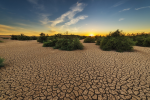
A rapid transformations of food and farming systems is needed to reduce greenhouse gas emissions and adapt to climate change, according to a new report released on Monday. The UN Food and Agriculture Organisation (FAO) warns that up to 122 million more people worldwide, most of them small-scale farmers, could be pushed into extreme poverty by 2030 as a result of climate change. The UN agency’s flagship report “The State of Food and Agriculture 2016” underscores that agriculture faces the challenge of producing more food while cutting greenhouse gas emissions caused by food production. The authors highlight that the impacts of climate change on agriculture and the consquences for food security are already alarming. However, a “business as usual” approach could put millions more people at risk of hunger. By 2030, the number of people living in poverty could increase by 35 to 122 million relative to a future without climate change, largely due to its negative impact on incomes in the farming sector. “There is no doubt climate change affects food security,” said FAO Director-General José Graziano da Silva, “What climate change does is to bring back uncertainties from the time we were all hunter gatherers. We cannot assure any more that we will have the harvest we have planted.” Negative effects of climate change are already being felt in some cereal crop yields. The regions that will be most affected are sub-Saharan Africa and South and Southeast Asia, those people who rely on agriculture for their livelihoods will be hit hardest. Climate change will expose both urban and rural poor to higher and more volatile food prices. “Everybody is paying for that, not only those suffering from droughts,” said Graziano da Silva. The report points out that helping the world’s more than 500 million smallholder farmers adapt to climate change is critical for global poverty reduction and food security. Smallholder agricultural systems can adapt by adopting climate-smart practices, diversifying on-farm agricultural production and diversifying into off-farm income and employment. Agroecology and sustainable intensification, says the FAO report, are examples of approaches that improve yields and build resilience through practices such as green manuring, nitrogen-fixing cover crops and sustainable soil management, and integration with agroforestry and animal production. Widespread adoption of nitrogen-efficient practices alone would reduce the number of people at risk of undernourishment by more than 100 million, the report estimates. In addition, water-conserving alternatives to the flooding of rice fields, for example, could cut methane emissions by 45%. FAO says that economically viable and sustainable farming practices are available but barriers to their adoption must be overcome. Obstacles can include input subsidies that promote unsustainable farming practices, poorly aligned incentives as well as inadequate access to markets, credit, extension services and social protection programmes, which often disadvantage women. Action has to be taken now, emphasized Graziano da Silva, since the adverse impacts of climate change will only worsen with time. Slow Food International welcomed the report and the backing given to agroecology, but critized that the authors do not give enough attention to industrial meat production and that there is no identifiable stance on genetically modfied crops in the report. (ab)
18.10.2016
Interview: Hans Herren calls for a radical transformation of agriculture

We need a radical transformation of agriculture and industrial food systems to deal with future challenges, says Hans Herren, winner of the World Food Prize and Co-chair of the “International Assessment of Agricultural Knowledge, Science and Technology for Development” (IAASTD). In an interview published in the Foundation on Future Farming’s new brochure “Agriculture at a Crossroads, he takes stock of the IAASTD’s impact and looks at the current debate on food and farming systems. Herren says “the key option for action that came from the IAASTD report is that agriculture, on a global scale, needs to transition to agroecology as the way ahead to deal with the challenges of sustainable and equitable development.” According to Herren, who today is president of the Millennium Institute in Washington and the Swiss Biovision Foundation, the recognition that present agriculture and food systems are not in line with the need for a sustainable world have made it to the mainstream of international discussions. “It is very satisfying to see that the debate and action around agroecology has picked up momentum. The need for a radical reset towards sustainability in all three dimension, environmental, social and economic – these messages have been heard and made their way into the debate around food and farming systems. They are now slowly moving into mainstream, despite a very strong pushback by vested interest, agro-industry and large foundations.” However, Herren also points out that one of the IAASTD’s most ignored messages is the need to also radically transform industrial food systems. “It is still assumed that developed countries, with their unsustainable industrial agriculture and food systems have to ‘feed the world’. The message that countries need to maximize their own capacity to produce food and protect their own farmers, also addressed as food sovereignty, has yet to be taken into account in the agriculture and food policies of developed countries.” He added that also developing countries still need to make more efforts to implement the options for action outlined in the IAASTD. According to Herren, one of the main excuses for not introducing more radical changes is that this is too expensive. “The truth is that it is irresponsible not to spend money to transform the system now to agroecological and regenerative practices and science.” Herren refers to the Green Economy Report, published by the United Nations Environment Programme (UNEP) in 2011, which clearly demonstrated that IAASTD’s recommendations can be implemented by 2050 with spending only about a third of the total agricultural subsidies paid today. “We would still produce enough food in the quantity and quality needed to nourish well nine to ten billion people, while using less land and water,” he adds. But Herren remains optimistic: “I think that there is light at the end of the tunnel but we have to keep watching the politics that undermine the urgently needed transformation of agriculture. Positive developments can be seen in many places, more good science is being produced in support of sustainable agriculture as defined by the IAASTD but governments are still not ready to pay the bill for R&D in the area of agrocecology, organic, regenerative agriculture, leaving the work to NGOs.” Herren is also positive about the UN Sustainable Development Goals (SDGs) adopted last year. “The targets relating to agriculture and food are many and very relevant to support the needed transformation as was recommended in the IAASTD." He thinks "there is a tremendous opportunity to create synergies, given that agriculture and food are so closely linked to all sectors and sustainable development dimensions. It is now imperative that they are implemented without delays focusing on the food system, sustainable agriculture and agroecology.”
17.10.2016
Paradigm shift in global agriculture needed to achieve sustainability goals

“Business as usual is not an option” – this was the wake-up call of the “International Assessment of Agricultural Knowledge, Science and Technology for Development” (IAASTD) when first published in 2009. Seven years later, this message is still valid. Meanwhile, the global discussion on the future of food and farming has come a long way. Some of the key messages of the IAASTD seem to be taking root at last and have been reflected in the United Nations’ Sustainable Development Goals (SDGs). The Foundation on Future Farming’s new brochure “Agriculture at a Crossroads: IAASTD findings and recommendations for future farming” summarizes these messages and links them to present challenges and goals ahead. On behalf of the United Nations and the World Bank, more than 400 scientists from all continents and disciplines had worked together in a four-year-process to assess the state of global agricultural knowledge, science and technology. Looking back some 50 years and trying to anticipate the challenges of the coming decades, the authors arrived at a clear-cut conclusion: A radical change in global agriculture is needed in order to cope with a growing population and climate change while avoiding social breakdown and environmental collapse. The IAASTD clearly debunked the myth that industrial agriculture was superior to small-scale farming in economic, social and ecological terms and argued for a paradigm change that recognizes the pivotal role small-scale farmers around the world play in feeding the world, while also maintaining natural resources and being the backbone of rural development. The 52-page-brochure, released by the Foundation on Future Farming on the occasion of World Food Day, presents and revisits the IAASTD’s main messages enriched with updated facts and figures, charts and maps as well as new insights from subsequent scientific publications. It covers a broad range of topics such as hunger and health, meat and animal feed, industrial and small-scale farming, agroecology, climate and energy, soil fertility and land grabbing. Interspersed throughout the text are key quotes from the original report and a collection of flagship projects and promising approaches of emerging sustainable agriculture and food systems. The brochure also connects the IAASTD’s findings to the Sustainable Development Goals adopted by world leaders in 2015. “The IAASTD has kicked off a paradigm shift away from productivism towards sufficiency,” says Benedikt Haerlin, director at the Foundation on Future Farming in Berlin and former NGO representative on the IAASTD Bureau. IAASTD co-chair and world food prize winner Hans Herren says in the brochure: “Agriculture must change from being a contributor to a solver of problems such as climate change, public health, environmental degradation, loss of farmers and rural to urban migration. The key option for action that came from the IAASTD report is that agriculture, on a global scale, needs to transition to agroecology as the way ahead to deal with the challenges of sustainable and equitable development.” Herren added: “It is now imperative that the SDGs are implemented without delays focusing on the food system, sustainable agriculture and agroecology.”
